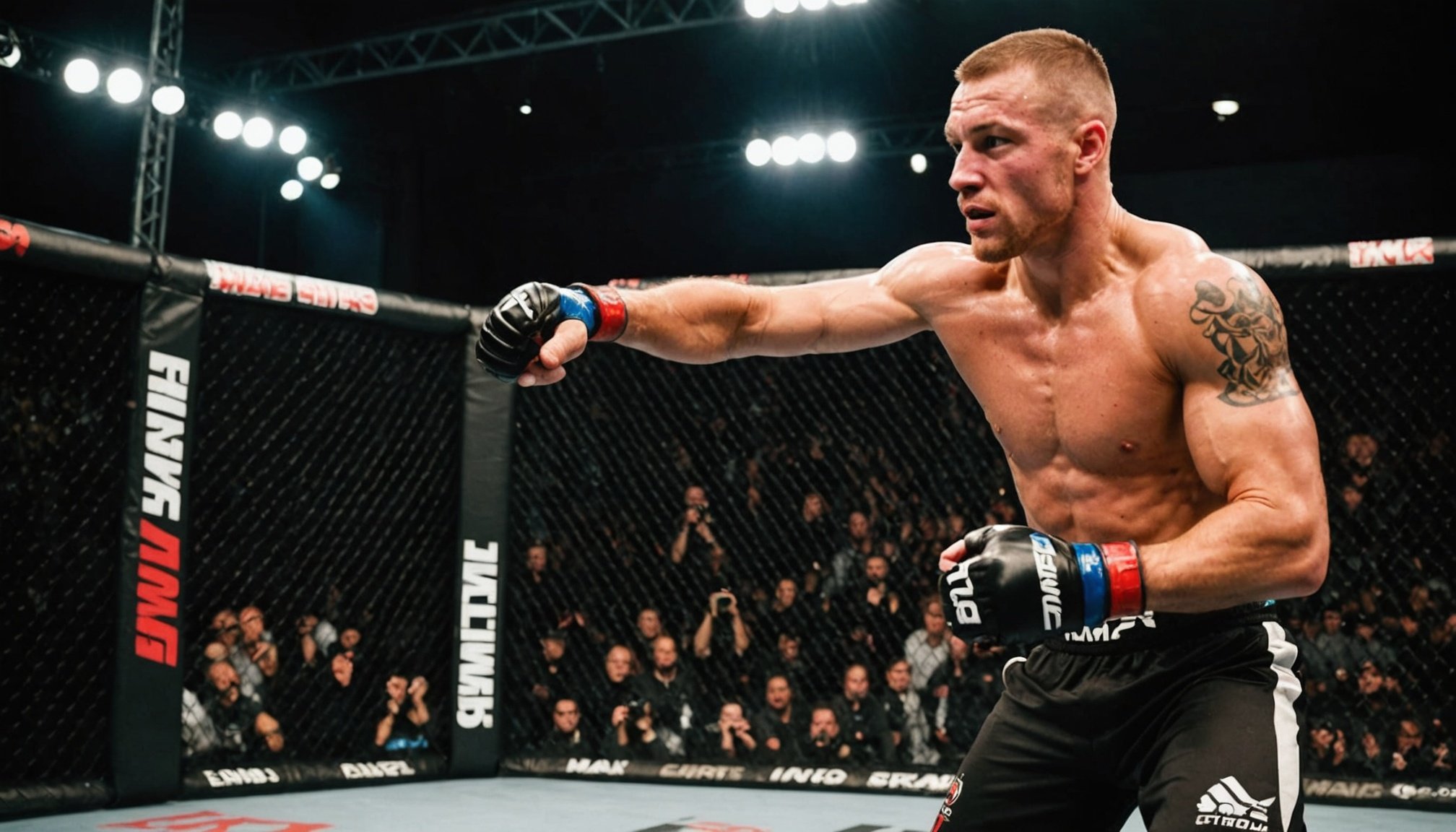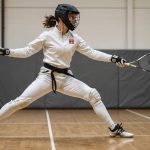Understanding HIIT for MMA Fighters
High-Intensity Interval Training (HIIT) serves as a cornerstone in MMA training, offering remarkable benefits for athletes aiming to enhance stamina and performance. By integrating short bursts of intense activity with recovery periods, HIIT mimics the dynamic nature of MMA competitions, where fighters experience sudden energy demands.
Importance of Stamina in MMA
In MMA, stamina is a game-changer. Fighters with superior endurance can maintain peak performance throughout rounds, delivering powerful techniques while staying agile. HIIT is particularly effective in cultivating this stamina enhancement. It trains the body to recover quickly, improving cardiovascular capacity and muscular endurance, essential for any fighter stepping into the octagon.
Additional reading : Enhancing fencing excellence: how biomechanical analysis transforms techniques for uk athletes
Unique Aspects of HIIT for UK MMA Fighters
UK-based fighters can tailor HIIT specifically for the conditions encountered in their region. Factors such as climate and available facilities influence training adaptations. Integrating HIIT within an athlete’s routine in the UK can diversify training methods, incorporating both indoor and outdoor setups to simulate diverse fighting environments. With regular incorporation, UK fighters can develop a strong fitness foundation catered to local needs, which might include weather-specific endurance practice or readily available community support for shared provenance in MMA training demands.
By understanding and applying HIIT, MMA fighters can significantly boost their stamina, aligning their training intensity and recovery with the demands of the sport.
Also read : Optimizing Training for UK Female Kickboxers: Tailored Strategies Aligned with Menstrual Health
Designing a HIIT Training Program
Designing an effective HIIT program for MMA fighters requires meticulous attention to the unique demands of MMA fitness. A well-crafted training blueprint begins with identifying key components critical for explosive power and endurance.
Key Components of a Successful HIIT Program:
- Intensity Levels: Workouts need to be intense enough to challenge an athlete’s aerobic and anaerobic systems. Graduated intensity ensures fighters can perform explosive movements typical in MMA.
- Variety: Integrating diverse exercises prevents adaptation, maximizing stamina enhancement. This includes using equipment like kettlebells and incorporating exercises that mimic combat movements.
Structuring Workouts to Meet MMA Stamina Demands:
- Workouts should consist of short, intense bursts followed by recovery intervals tailored to individual levels, focusing on replicating the dynamic nature of fights.
Frequency and Progression in Training Loads:
- Initial Stage: Start with HIIT sessions twice a week, gradually increasing frequency as fitness improves.
- Progressive Overload: Gradually increase intensity and complexity to continuously challenge the athlete.
Adhering to a structured plan ensures the continuous improvement of endurance and performance, creating a solid foundation for any fighter aiming to excel in the rigorous environment of MMA combat.
HIIT Workouts for UK MMA Fighters
MMA workouts incorporating high-intensity training are quintessential for fighters seeking optimal conditioning. By focusing on targeted conditioning routines, UK fighters can harness the benefits of HIIT, maximizing stamina and performance.
Sample HIIT Workouts
Sample HIIT workouts for MMA fighters are designed to push cardiovascular limits while honing combat skills. For example, alternating between rapid-fire punching combinations and short sprints reliably simulates the exertions faced during fights. These workouts should prioritize both intensity and technique, enabling athletes to maintain high energy levels across rounds.
Sport-Specific Conditioning Drills
Conditioning drills tailored for mixed martial arts incorporate sport-specific movements. They blend traditional HIIT elements like explosive jumps and lateral shuffles with fight-centric drills such as ground-and-pound sequences. The integration of these drills ensures a comprehensive fitness regime that mirrors live combat stress.
Incorporating Sparring and Technique
Blending sparring and technique work within HIIT routines enhances tactical agility and resilience. Practitioners can alternate between precision striking sequences and defensive manoeuvres, imitating real-time bouts. This integration not only furthers physical conditioning but also refines fight strategies, making every move count in the octagon.
Nutritional Strategies for Enhancing Stamina
For MMA fighters, nutrition plays a critical role in sustaining energy and supporting the rigorous demands of training. Optimal MMA nutrition involves a strategic approach, aligning dietary practices with the athlete’s performance goals.
Macronutrient Breakdown
A targeted macronutrient balance is essential. Prioritise carbohydrates for energy replenishment, proteins for muscle repair, and healthy fats to maintain optimal body function. This trio supports a fighter’s stamina, ensuring stamina support throughout intense sessions.
Timing Meals and Snacks
Strategic meal timing enhances energy levels and stamina support. Consuming balanced meals with slower-digesting carbs and lean proteins 3-4 hours before training provides a sustained energy release. A smaller, easily digestible snack 30-60 minutes pre-workout can boost performance.
Supplements and Hydration
Supplements like BCAAs and creatine can enhance recovery and stamina support during training cycles. Proper hydration is equally crucial. Dehydration impairs performance, so maintaining fluid intake before, during, and after workouts is vital. Consider electrolytes for prolonged sessions.
By aligning dietary practices with training regimens, MMA fighters can bolster their performance, ensuring they are nutritionally equipped to meet their sport’s demands.
Recovery Techniques for MMA Fighters
Effective recovery strategies are integral to successful MMA training. Understanding that rest and recovery are as critical as the training itself can make a significant difference in an athlete’s performance and longevity in the sport. In particular, inadequate recovery leads to burnout and increases the risk of injuries, derailing an athlete’s progress.
Active Recovery Techniques
Active recovery methods, such as light jogging or dynamic stretching, keep the blood flow steady, aiding in the elimination of lactic acid. Engaging in low-intensity movements can enhance muscle repair, ensuring fighters return to peak condition faster. Integrating yoga and Pilates can also boost flexibility, further reducing injury risks.
Mental Recovery for Focus
Equally important is mental recovery. Maintaining psychological resilience is crucial in MMA. Techniques such as mindfulness meditation or visualization practices help athletes clear their minds and enhance focus. Such strategies bolster mental clarity and aid in managing the mental demands of high-intensity training.
Incorporating these recovery approaches within a HIIT program ensures sustained performance, supports injury prevention, and keeps athletes both physically and mentally ready for the challenges of the octagon.
Expert Insights and Resources
Navigating the path to MMA excellence demands not only personal discipline but also insights from MMA coaches and reliable resources. Professional guidance can significantly enhance MMA training programs, offering crucial perspectives on improving skills and stamina.
Interviews with MMA Coaches
Interviews with veteran coaches provide firsthand knowledge on effectively integrating HIIT into MMA training routines. These experts share strategies for managing high-intensity regimens, tailoring workouts to individual needs, and avoiding common pitfalls. Insights from these interviews can guide fighters in refining their techniques and maximizing endurance gains.
Recommended Training Facilities in the UK
For UK-based fighters, selecting the right facility is crucial for developing key skills and techniques. Many top-notch training facilities across the UK are equipped to support diverse training programs. These centers offer an array of equipment and personalized coaching, aligning their resources with the demands of MMA fitness.
Online Resources and Communities
Accessing online platforms can complement the physical training environment by providing a wealth of MMA training resources. These communities foster connections among fighters, facilitating the exchange of tips, experiences, and motivational content. Participating in these resources offers continuous support to enhance training and performance in the octagon.





